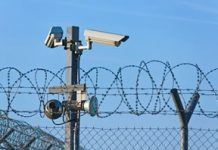In the US, the Security Industry Association (SIA) has released its new policy principles guiding the development and deployment of facial recognition technology. SIA believes all technology products, including facial recognition, must only be used for purposes that are lawful, ethical and nondiscriminatory.
“SIA recognises that some community leaders have expressed deeply-held views calling for the end of facial recognition technology use by law enforcement and the private sector. We respectfully but firmly disagree. Facial recognition technology offers tremendous benefits to society when used effectively and responsibly and with appropriate safeguards,” SIA CEO Don Erickson said. “We invite all stakeholders to review these well-thought-out principles and engage with us in meaningful discussions leading to common-sense approaches to how this technology is used.”
SIA has committed to the following principles to be used in the development and deployment of facial recognition technology. SIA believes that these principles should apply to implementation of facial recognition tools across safety and security applications, in both public- and private-sector settings, and that they should be reflected in development of any organisational or public policies addressing these uses of the technology.
SIA’s core principles include:
• Ensuring transparency surrounding the use of facial recognition
• Establishing a clear and defined purpose for the use of facial recognition by organisations
• Using high-performing and accurate technology
• Incorporating human oversight and review
• Protecting data security
• Ensuring privacy by design
• Training and educating users of technology
• Improving or eliminating biased or discriminatory software
• Maintaining ethical acquisition of facial recognition technology
These core policy principles were developed by, and with input from, many SIA members, including members of the SIA Facial Recognition Working Group, the SIA Data Privacy Advisory Board and the SIA Executive Committee. In addition to these core principles, the new document includes guidelines around the use of facial recognition technology by law enforcement and the public and private sectors.








